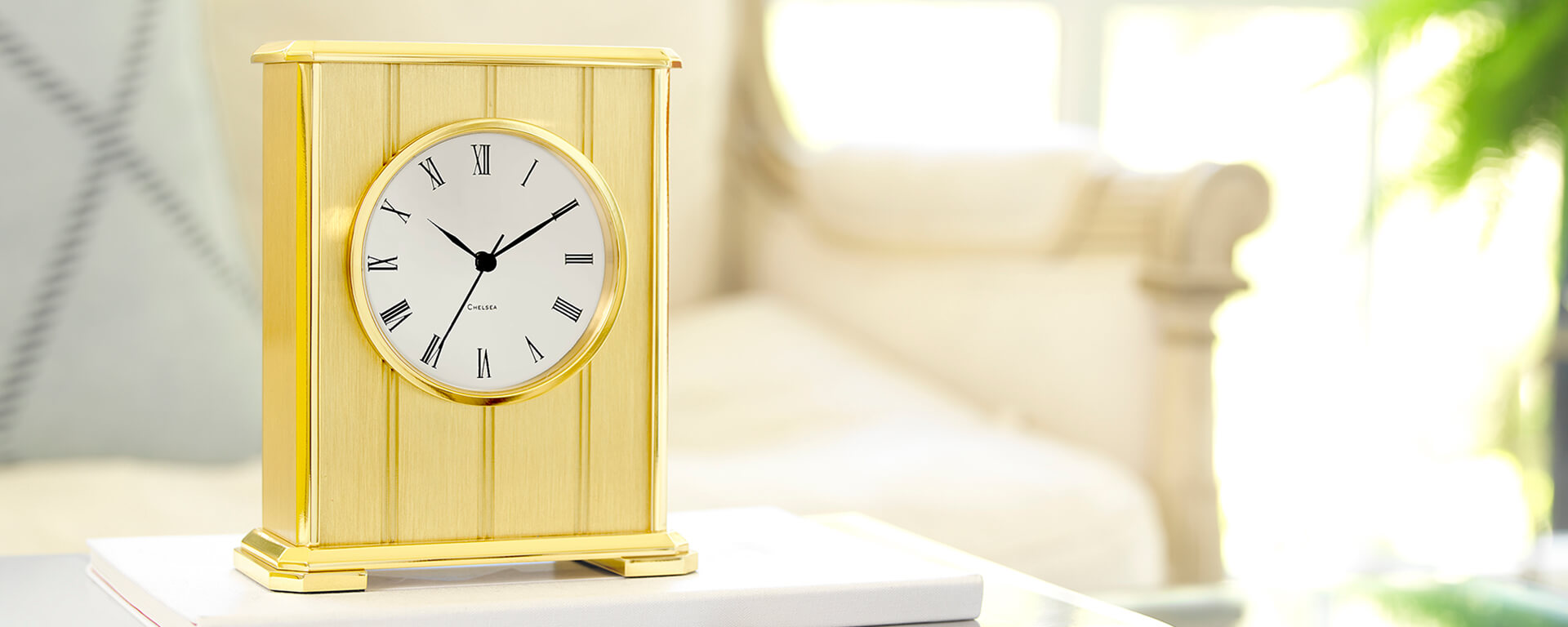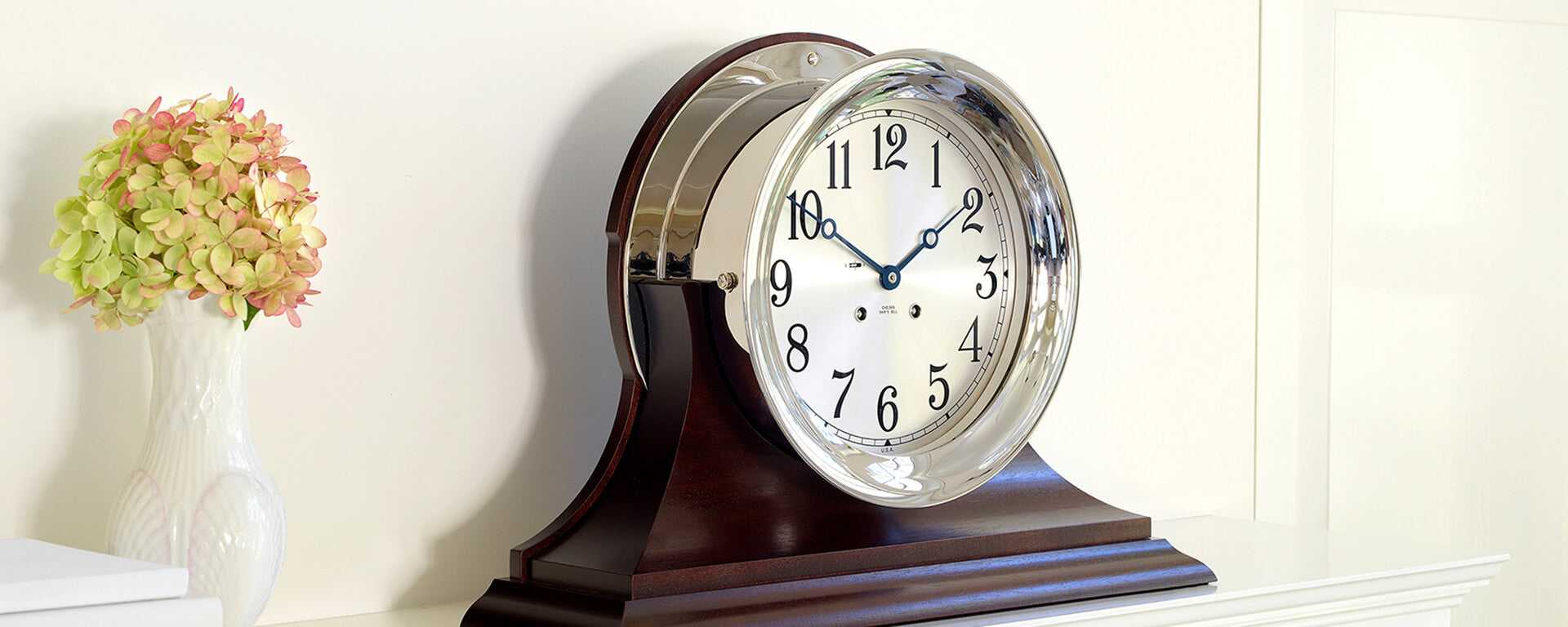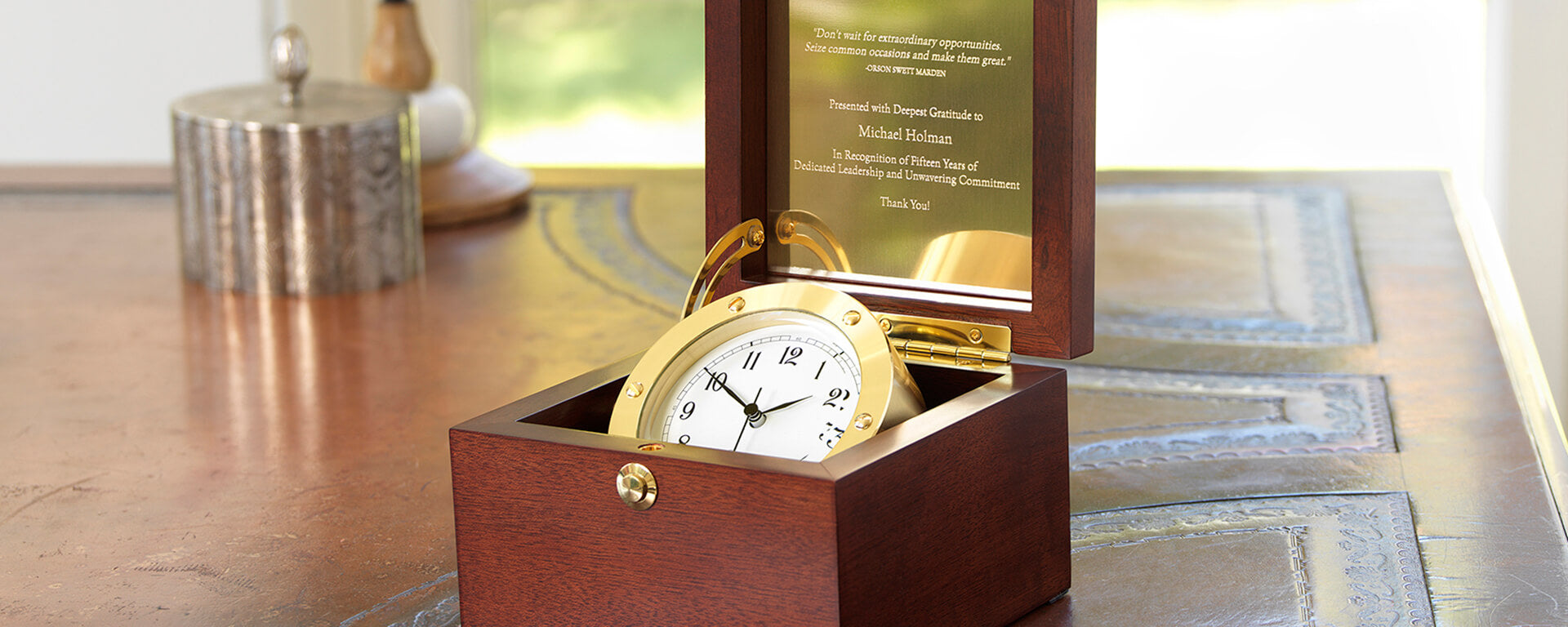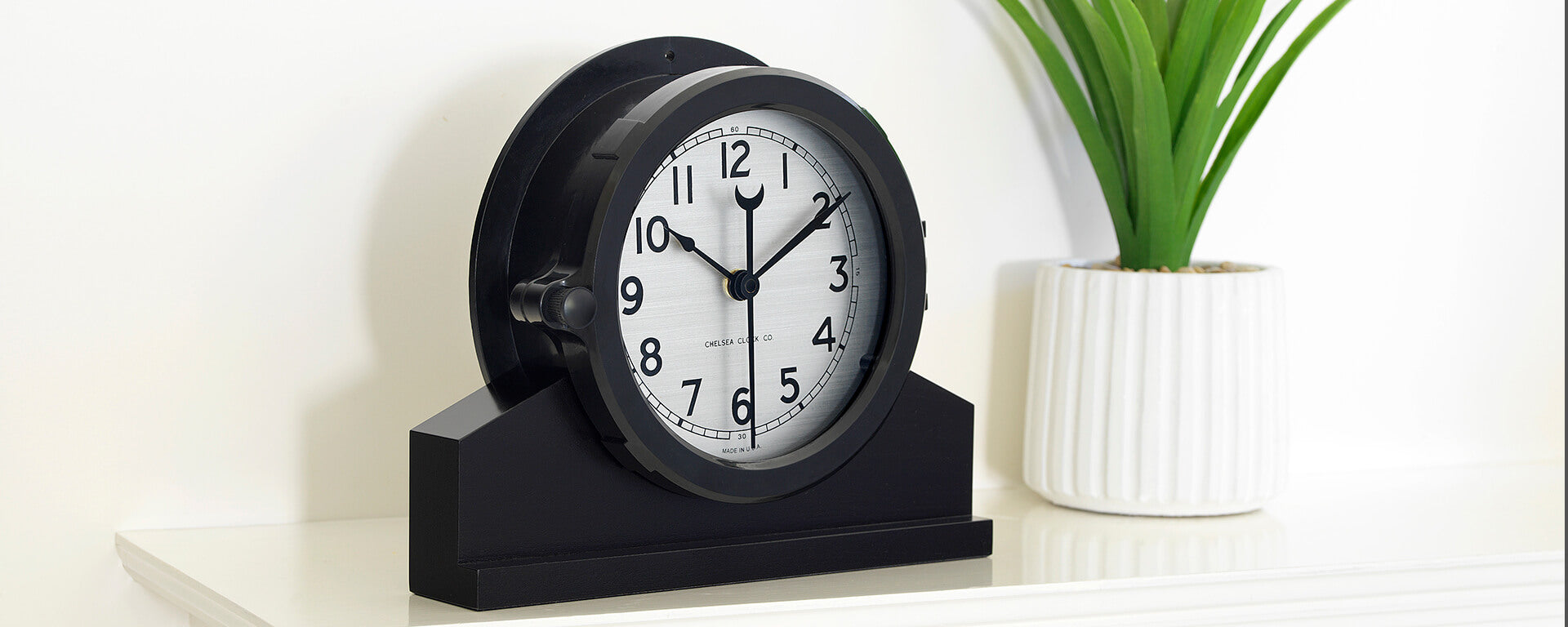How to Clean an Antique Clock Case
Antique clocks are a sought-after crown jewel clock enthusiasts and fans of traditional décor. These elegant mechanical clocks, pendulum clock and early quartz clocks will look impressive in any home.
Proper care for old clocks is important. They are valuable instruments made of materials that require regular maintenance to look and function properly. Our antique clock case cleaning guide demonstrates how to restore a wooden or brass Chelsea Clock vintage clock exterior and offers a few other tips for classic clock preservation.
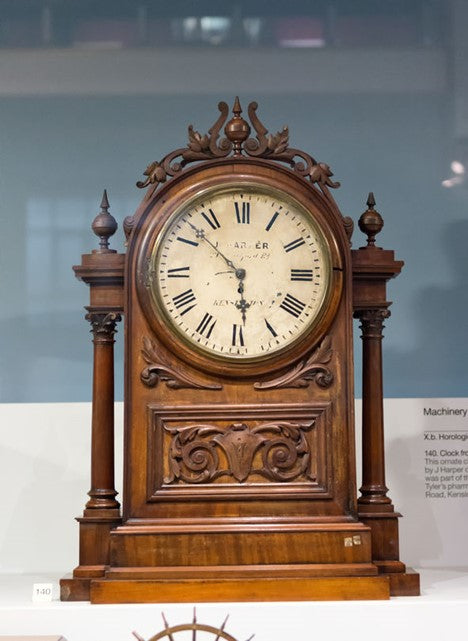
Cleaning a Vintage Wood Clock Case
Many old clock cases are dark and dirty from years of dust collection, furniture polish build-up and potentially even smoke damage. Still, the original finish is likely beneath it all. The goal is getting the dirt off without also removing the refined finish.
If you can’t find a product specifically formulated for cleaning clock cases, we’ve found Mr. Clean works very well. (Do not use any cleaner with a pH about 7.0, as this will continue eating at the surface after you’re done cleaning.) Add some Mr. Clean to a super-fine steel wool pad, soft-bristle brush or cotton swab and gently scrub using a circular motion until the wood grain reappears.
Once you’ve restored the original finish, regular cleaning and polishing will maintain the luster. Simply rubbing the case with a soft cotton cloth will remove dust and surface dirt. For polishing, apply a wood finishing wax of your choice with a cotton cloth or soft-bristle brush. Avoid silicone-based spray polishes; these leave an intense shine but clog the pores and grain in the process.
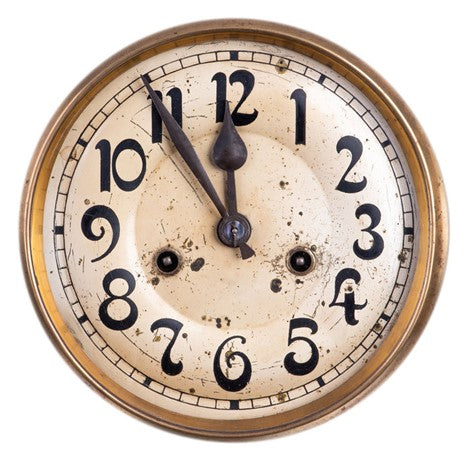
How to Clean Antique Brass Clocks and Watches
Even the most tarnished, blackened brass clock case can be restored to its original luster. To clean off the tarnish, you must first remove the existing lacquer. The protective clear coat applied during the clock-making process often doesn’t wear evenly, leading to splotches on the case. Evenly brush on a paint-stripper paste to take off the lacquer (test a small patch first to make sure it works). After the surface has dried, apply brass polish using a soft cotton cleaning cloth following the product instructions.
After the case is restored, you have three choices: add a new lacquer coat, continue to polish regularly or let the natural dark patina build evenly. If you prefer the aged look of brass patina, you can still clean your brass clock case without taking off this oxide layer. The simplest way to do this is with a liquid detergent free of ammonia and acids or with the organic solvent acetone.
Other Tips for Antique Clock Care
- Always handle vintage clocks delicately.
- Oil the mechanism every four to five years and get full service done every 10 years.
- Don’t position your clock near a fireplace, radiator, direct sunlight or any other place where extreme temperatures and humidity are possible.
- Keep the clock running. If left idle, the parts dry up and often require service to get running again.
- When adjusting the time, always do so in a clockwise direction.
By following this guide, you can keep decades-old clocks looking exquisite for many more decades. If you’re looking for a new piece, visit our antique and vintage clock collection to see what’s available. We also offer full repair and restoration services if your vintage clock needs more extensive work.


